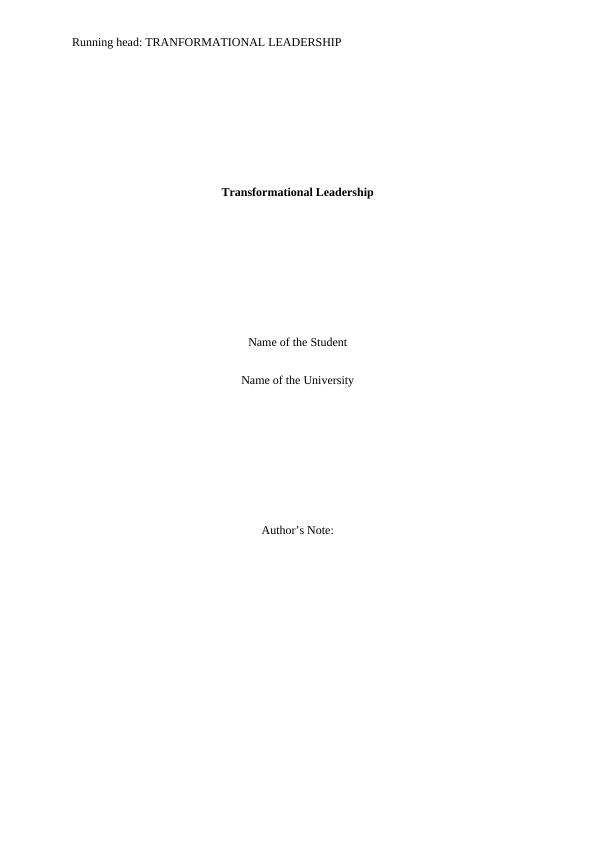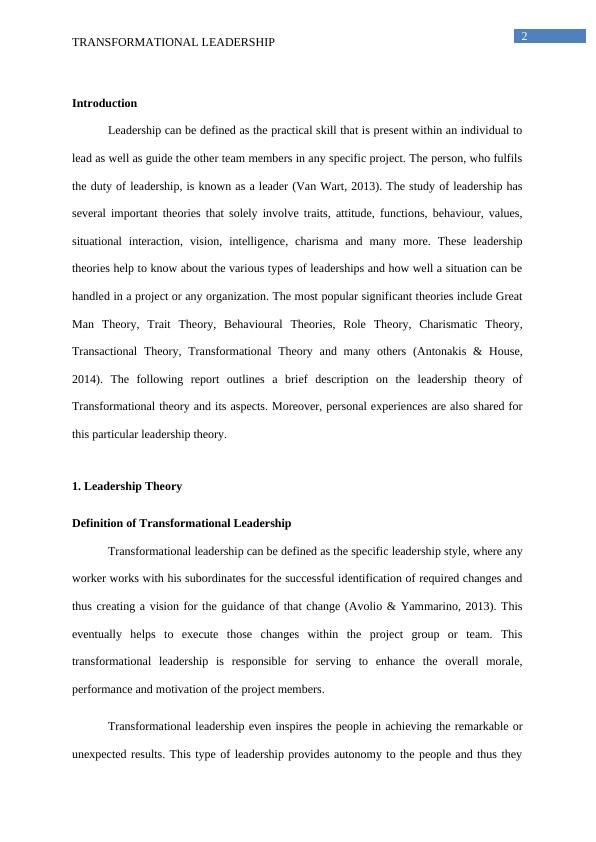Transformational Leadership: Definition, Aspects, and Mitigation Techniques
This assignment requires students to choose one of the six major leadership theories and explain its main aspects. They also need to discuss how the chosen theory helps overcome challenges faced by contemporary project leaders. Additionally, students are required to reflect on a meaningful past experience and relate it to key aspects of relevant leadership theory. They should also describe an incident where they personally demonstrated leadership and discuss the attributes and behavior displayed, as well as the lessons learned from the experience.
Added on 2023-06-14
About This Document
Transformational Leadership: Definition, Aspects, and Mitigation Techniques
This assignment requires students to choose one of the six major leadership theories and explain its main aspects. They also need to discuss how the chosen theory helps overcome challenges faced by contemporary project leaders. Additionally, students are required to reflect on a meaningful past experience and relate it to key aspects of relevant leadership theory. They should also describe an incident where they personally demonstrated leadership and discuss the attributes and behavior displayed, as well as the lessons learned from the experience.
Added on 2023-06-14
End of preview
Want to access all the pages? Upload your documents or become a member.




